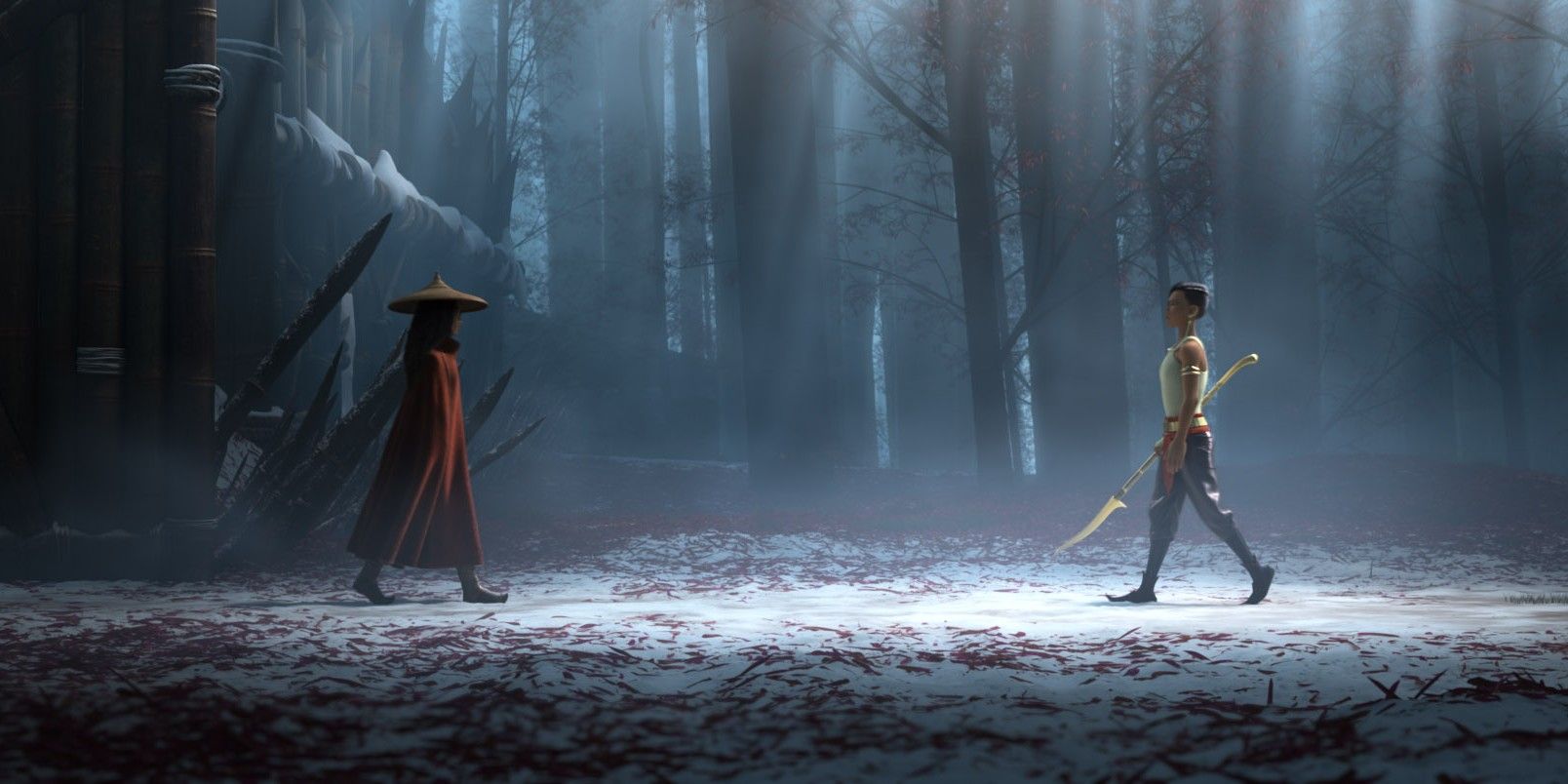Raya & The Last Dragon Continues Disney's New (& Better) Princess Tradition

Raya and the Last Dragon continues a new, and better, Disney princess tradition by making Raya the hero of Kumandra sans romantic storyline. Like 2013's Frozen and 2016's Moana, Raya and the Last Dragon features a female protagonist not defined by her relationship with a man. With the movie, Disney takes another step forward in creating powerful female role models and portraying more realistic girls and women.
Disney has long been associated with fairytale princesses. Its first feature-length animated movie, Snow White and the Seven Dwarves, retold the story of how an under-appreciated princess found true love. Since then, Disney has continued to feature young women struggling to find love, building an idea of the perfect princess. Until recent years, a Disney princess was a modest, kind and submissive woman, often fitting the archetype of a damsel in distress. Movies like The Little Mermaid, Beauty and the Beast, and Pocahontas all centered on the characters' search for true love, with Ariel, Belle, and Pocahontas only finding happiness and fulfillment once they enter a relationship. Even Mulan, who broke several Disney princess rules at the time, eventually found love with Li Shang.
Starting in the 2000s, Disney began to break away from that tradition, telling stories with more three-dimensional female characters. Frozen took a major leap forward by subverting the true love storyline when Elsa's love for her sister Anna saved the day, instead of ending with a wedding. Three years later, Moana discarded the romantic subplot completely, focusing on Moana's struggle to find herself and take leadership over her village. Likewise, Raya and the Last Dragon discards the true love trope in favor of a story about growing up, becoming a responsible leader, and making peace with your enemies. In the end, the story revolves around the concept of forgiveness and the love that comes from it.

Raya does fit the definition of a Disney princess in some ways, meeting all the official criteria. Like Moana, she's human, the protagonist of an animated film, wasn't introduced in a sequel, and has royal blood. Raya is also described as the princess of Heart, one of the five regions of Kumandra. Plus, she fits some other princess patterns, such as missing her mother and having an animal sidekick, Tuk Tuk, who she can talk to and who provides some comic relief.
Unlike earlier Disney princesses, however, Raya is fully capable of making her own way in the world. Orphaned at a young age, Raya had to learn how to fend for herself — she didn't have any older family members or friends to mentor her. When Raya and her friends are in danger, she is the one to assume a leadership role, taking responsibility for protecting others, and solving the crisis. Additionally, Raya and the Last Dragon subverts traditional concepts of femininity by having Raya display stereotypically masculine traits, like independence and aggression. Raya's physical strength is one of her most notable traits, as she enters and wins fights with Namaari and others. More than once, Raya saves herself from jeopardy by relying on her skill with a sword rather than magic or cunning.
Most importantly, Raya's story does not include a romantic arc. Instead, it focuses on her assumption of responsibility for her kingdom, Heart. After Raya's father is taken by the Druun, she embarks on a quest to banish the Druun and reunite Kumandra by reassembling the dragon stone. Like Moana, Raya and the Last Dragon has a mix of themes, combining a coming-of-age story with a heroic journey. In a new Disney princess tradition established by Moana, Raya isn't perfect. Throughout the film, she struggles with her anger and suspicion toward others, holding a grudge against Namaari for years. Raya's story is about overcoming those flaws and learning to become a true leader by taking steps toward unity and trust.
from ScreenRant - Feed

